lack of exercise, a poor diet, and obesity also can
tem, even among those who don’t have outward
exacerbate these effects.
symptoms, precede and predict a higher risk of
developing cardiovascular diseases. The greater
It’s this cycle, with age as the principal instigator, these changes are, the greater is the risk for getting which gradually helps change youthful and
these diseases.”
healthy blood vessels into old and potentially dis-
eased ones. In a sense, this progression transforms
Keeping Your Arteries Healthy
a young person’s arteries, which are like soft latex
balloons, into the equivalent of rigid, bulky bicycle The well-being of your arteries depends on a
tires in later life.
healthy endothelium, the inner lining of your
blood vessels.
However, arterial stiffness and intimal-medial
thickening occur at varying rates in different people.
“Endothelial cells are the prima donnas within the
Studies suggest that the rate of both of these age-
blood vessels. They control almost every activity
related changes predict stroke, heart disease, and
that occurs in the vessels, and they’re fundamen-
other cardiovascular problems. For example, in one
tally altered with age,” Dr. Lakatta says. “People
large study that followed healthy volunteers who
who maintain a healthy endothelium as they get
had no previous symptoms of heart disease, those
older and those who make an effort to do things
who had the greatest amount of intimal-media
that promote the repair of injured endothelium
thickening were four times more likely to develop
can reduce the risk of heart attacks and strokes
cardiovascular conditions over the next 7 years
caused by atherosclerosis or hypertension.”
45
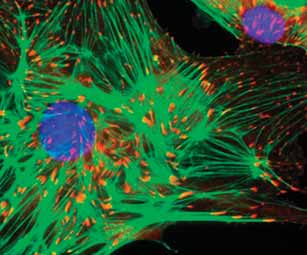
...moderate exercise, such as running, walking, or swimming can reduce body fat, increase lean muscle mass, decrease blood pressure, and increase HDL cholesterol levels. All of these exercise-induced changes can have a positive influence on endothelial cells.
and heart rate. Free radicals in smoke slash the
amount of nitric oxide available in the blood
stream. Nitric oxide, as you may recall, is a signaling molecule that helps keep arteries pliable. Because
nicotine causes narrowing of blood vessels, less
oxygen is transported to the heart. If you smoke,
blood platelets become stickier and are more apt to
form clots in your arteries.
As we mentioned earlier, high blood pressure—
hypertension—causes blood vessels to thicken,
diminishes production of nitric oxide, promotes
blood clotting, and contributes to the develop-
ment of atherosclerotic plaques in the arteries.
Endothelial cells, such as this one, produce sub-
Blood pressure is considered high when systolic
stances that regulate the structure and function of pressure exceeds 140 mmHg and when diastolic
the arterial wall. Endothelial cells may play a critical role in the aging of arteries and the onset of blood pressure is higher than 90mmHg.
high blood pressure and atherosclerosis.
Excessive weight increases the risk of high blood
pressure and can increase the likelihood that you’ll
Although scientists still have much to learn about
have high blood triglycerides and low HDL cho-
the endothelium and what can be done to keep it
lesterol, Dr. Lakatta says. Being overweight can
healthy, a number of studies suggest that certain
also increase the probability you’ll develop insulin
modifiable risk factors can have an important
resistance, a precursor of diabetes. (See Metabolic impact on the cardiovascular system. For instance,
Syndrome Accelerates Aging of Arteries, page 48) regular moderate exercise, such as running, walking,
Diabetes, a disease in which the body does not
or swimming can reduce body fat, increase lean
produce or properly use insulin, becomes more
muscle mass, decrease blood pressure, increase
common as we age. In fact, nearly half of all cases
HDL cholesterol (the “good” cholesterol) levels,
are diagnosed after age 55. Atherosclerosis develops
and lessen the extent of arterial stiffening. All of
earlier and is more aggressive in people who have
these exercise-induced changes can have a positive
diabetes. In part, this occurs because diabetes
influence on endothelial cells. (See Exercise: Your causes the endothelium to produce excessive
Heart’s Best Friend, page 47)
amounts of superoxide anion, a free radical that
In addition, scientists have long known that tobacco
destroys nitric oxide. People age 65 and older who
smoke contains numerous toxic compounds, such
have diabetes are nearly four times more likely than
as carbon monoxide, that promote endothelial cell
those who don’t to develop peripheral vascular
damage. Smoking also increases blood pressure
disease, a condition that clogs the arteries that
46


Exercise: Your Heart’s Best Friend
I n one of her better-known gags, comic Ellen cell in the cardiovascular system. Animal stud-DeGeneres quips, “My grandmother started
ies, for instance, suggest that regular aerobic
walking five miles a day when she was 60. Now
workouts help heart muscle cells remove calci-
she’s 97 years old and we don’t know where the
um from their inner fluid at a faster rate after a
heck she is.”
contraction. This improved calcium cycling allows
the heart to relax more and fill with more blood
Funny, yes. But regular physical exercise is no
between beats.
joke. In fact, it may be the most important thing
a person can do to fend off heart disease, stroke,
Exercise also improves blood vessel elasticity and
and other age-associated dis-
endothelial function, in part, by
eases. Emerging scientific evi-
blocking the production of dam-
dence suggests that people
aging free radicals and main-
who exercise regularly not only
taining the production of nitric
live longer, they live better.
oxide, an important signaling
molecule that helps protect the
Scientists have long known that
inner layer of the arteries.
regular exercise causes certain
Together, these changes can
changes in the hearts of
younger people: Resting heart
slow the progression of athero-
rate is lower, heart mass is
sclerosis and other age-related
higher, and stroke volume is
cardiovascular conditions.
higher than in their sedentary
Endurance exercises such as
counterparts. These differences
brisk walking increase your
make the heart a better pump.
stamina and improve the health
Evidence now suggests these
of your heart, lungs, and circu-
changes occur even when exer-
latory system. But other exer-
cise training begins later in life, at age 60 or 70,
cises are equally important to maintaining health
for instance. In other words, you don’t lose the
and self-reliance as you get older. Strength exer-
ability to become better physically conditioned.
cises, for instance, build muscles and reduce your
In addition, several studies have shown that exer-
risk of osteoporosis. Balance exercises help prevent
cise not only helps reduce debilitating symptoms
a major cause of disability in older adults: falls.
such as breathlessness and fatigue in people who
Flexibility or stretching exercises help keep your
have heart failure, it also prolongs life.
body limber. As part of a daily routine, these exer-
Exercise training may be effective because it
cises and other physical activities you enjoy can
appears to improve the function of virtually every
make a difference in your life as you get older. •
This free booklet is available in both
For more information contact:
English and Spanish from the NIA.
NIA Information Center
The booklet is also available online
P.O. Box 8057
at www.niapublications.org/
Gaithersburg, MD 20898-8057
exercisebook/index.asp.
1-(800)-222-2225
1-(800)-222-4225 TTY
www.niapublications.org
47

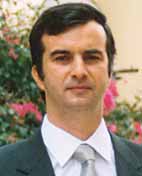
Metabolic Syndrome Accelerates
Aging of Arteries
Many older Americans have high blood pres- associated with metabolic syndrome developed sure or high blood sugar or just a bit too
stiffer and thicker arteries at earlier ages than
much fat on the belly. While each of these con-
those who didn’t have the syndrome.
ditions alone is bad enough, having all of these
“It’s as if the metabolic syndrome makes your
conditions at once—a cluster called metabolic
blood vessels older,” says Angelo Scuteri, MD,
syndrome—magnifies the risk of developing
PhD, an investigator at the NIA’s Laboratory of
heart disease and stroke. And NIA scientists
Cardiovascular Science. “If you have metabolic
may have discovered a reason why: Metabolic
syndrome, when you are 40 your arteries look like
syndrome appears to
they are 55 or 60.”
accelerate stiffening
and thickening of the
As this work moves forward, scientists hope they
arteries.
can determine how metabolic syndrome promotes
accelerated aging in the arteries and perhaps dis-
Metabolic syndrome—
cover ways to prevent or treat it. •
also known as syndrome
X or insulin resistance
syndrome—may affect
Arterial stiffness, a risk factor for age-related car-as many as 47 million
diovascular diseases, increases more rapidly in older Americans, according to
Angelo Scuteri
people who have metabolic syndrome.
the Centers for Disease
MD, PhD
Control and Prevention
Metabolic Syndrome
(CDC). After age 50, a person has a better than
Increases Arterial Stiffness
one in three chance of developing this group of
medical conditions characterized by insulin
with
resistance and the presence of obesity, abdominal
Metabolic
fat, high blood sugar and triglycerides, low HDL
Syndrome
(good) blood cholesterol, and high blood pressure.
To determine the effects of metabolic syndrome
on aging arteries, NIA researchers studied 471
without
participants—average age 59—in the Baltimore
Arterial Stiffness
Metabolic
Syndrome
Longitudinal Study of Aging (BLSA). None of
these participants had any detectable signs of
35
50
65
80
cardiovascular disease when initially examined.
Age
But those who had three or more conditions
Age-effect p<0.0001, MS effect p<0.01, Interaction n.s.
48

carry blood to the legs or arms. And, cardiovascular
diseases and stroke are leading causes of diabetes-
related deaths. If you suspect you have or are at
risk for diabetes, check with your doctor.
Symptoms include increased thirst, increased
hunger, fatigue, increased urination—especially at
night, unexplained weight loss, blurred vision,
and slow healing of wounds and sores.
Researchers have also found that stress reduction
techniques, such as taking a walk, practicing yoga,
or deep breathing are important to cardiovascular
health. Emotional stress triggers the release of
adrenaline from the adrenal gland and noradren-
aline from the nerve endings in your heart and
blood vessels. These hormones make the heart
beat faster and adversely affect blood vessels. Under stress, an older person’s blood pressure rises more
rapidly and stays higher longer than a younger per-
son’s because the older person’s blood vessels are
stiffer and have lost much of their elasticity.
Healthy Foods, Healthy Arteries:
Fruits and vegetables are key components of a
heart-healthy diet. These food contain compounds
Is There a Connection?
that can help subdue free radicals, prevent oxida-What you eat can help keep your heart and arteries
tion in the arteries, and lower blood cholesterol levels, all of which are important for maintaining healthy—or lead to excessive weight, high blood
a thriving endothelium.
pressure, and high blood cholesterol—three key
factors that increase the risk of developing cardio-
vascular disease, according to the National Heart,
arteries, dietary experts say. Fruits and vegetables
Lung, and Blood Institute. Based on the best avail-
also contain plenty of soluble fiber, a substance
able scientific evidence, the American Heart
that has been shown to reduce blood cholesterol
Association (AHA) recommends a diet that includes
levels, which is healthy for the endothelium.
a variety of fruits, vegetables, and grains, while
Breads, cereals, and other grain foods, which pro-
limiting consumption of saturated fat and sodium.
vide complex carbohydrates, vitamins, minerals,
Fruits and vegetables have lots of antioxidants
and fiber, are associated with a decreased risk of
such as vitamin C and vitamin A that neutralize
cardiovascular disease, according to the AHA
free radicals and may prevent oxidation in the
Dietary Guidelines. However, some studies suggest
Based on the best available scientific evidence, the American Heart Association (AHA) recommends a diet that includes a variety of fruits, vegetables, and grains, while limiting consumption of saturated fat and sodium.
49
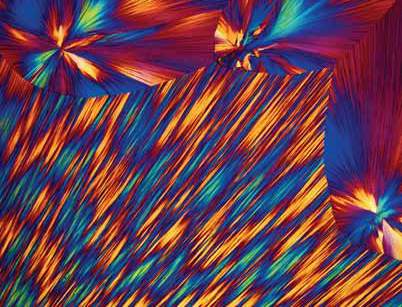
Control over the condition of our arteries may also lie in how much salt we consume.
In cultures where little sodium (in the form of salt) is consumed, blood pressures do not rise with age.
eating less sugar, breads, and other simple and
Saturated fats are usually solid at room tempera-
complex carbohydrates can lower blood insulin
ture. These fats are primarily found in animal
levels and decrease body fat and weight—three
foods like meat, poultry, and dairy products like
factors that are linked to an increased risk of heart butter. Saturated fats tend to raise levels of “bad”
disease and stroke. In recent years, a number of
low-density lipoprotein (LDL) and increase the
dietary recommendations based on these findings
risk of atherosclerosis. In fact, within 2 hours of
have become popular and are currently catching
eating a high saturated fat meal, endothelial cells
the public’s awareness. While contentious, these
don’t work as well. Such meals can cause a tempo-
are important issues and long-term studies are
rary 50 percent dip in endothelial function, even
required to determine the risks and benefits of
in healthy young people who have no risk factors
such diets, Dr. Lakatta says.
for atherosclerosis, Dr. Lakatta says.
Blood cholesterol, shown here in a crystallized
In addition to saturated fats, some scientists are
image, is one of many modifiable risk factors that concerned about trans-fatty acids—unsaturated
contribute to the onset of atherosclerosis and car-fats that have been artificially solidified by food
diovascular disease in later life. Dietary changes manufacturers in a process called hydrogenation
and regular exercise can help keep blood choles-
to make products like margarine and vegetable
terol levels under control.
shortenings. These scientists suspect that trans-fatty acids, which are often described as hydrogenated
or partially hydrogenated fats on many food
labels, are more damaging to the heart and arter-
ies than saturated fats.
But researchers have found other types of fats
may be beneficial. Monounsaturated fats, found
mainly in plant foods such as peanuts and olives,
help lower LDL cholesterol. Like polyunsaturated
fats, monounsaturated fats are usually liquid at
room temperature. Polyunsaturated fats, found in
fish, nuts, and dark leafy vegetables, have been
getting a lot of attention from scientists in the
past few years. They’ve concluded that one type of
polyunsaturated fat—omega-3 fatty acid—found
in fish may promote several things that improve
endothelial function, including increasing nitric
oxide production, slashing the production of free
radicals and other substances that cause inflam-
mation, and boosting HDL cholesterol levels. Fish
50
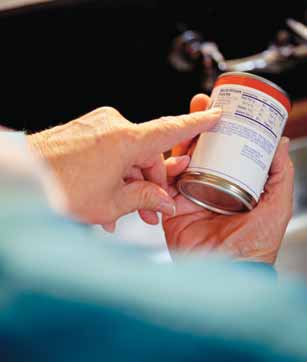
such as salmon, herring, and mackerel are good
sources of omega-3s.
Control over the condition of our arteries may
also lie in how much salt we consume. In cultures
where little sodium (in the form of salt) is con-
sumed, blood pressures do not rise with age.
Cultural differences have also been found in arterial stiffness. One study compared rural and urban
populations in China. The urban population con-
sumed much higher levels of sodium than the
rural groups. And they had stiffer arteries. Other
researchers found that sodium appears to accelerate
age-associated stiffening of arteries. In particular, sodium promotes thickening of aging arterial
walls, reduces the amount of nitric oxide available
to endothelial cells, and promotes the formation
of oxygen free radicals. But shifting to a low sodi-
um diet, research suggests, can begin to diminish
arterial stiffness in as little as 2 weeks.
Scientists suggest that you consume no more than
1,500 milligrams (mg) of sodium each day (an
Most of the sodium in your diet comes from
average American adult consumes about 3,300
processed foods. The remaining is added at the
milligrams daily).
table and while cooking. Scientists who study this
issue suggest limiting the amount of sodium that
you consume from all these sources to no more
than 1,500 milligrams (mg) each day (an aver-
age American adult consumes about 3,300 mil-
ligrams daily). They recommend reading food
labels carefully and buying foods that say “reduced
sodium,” “low in sodium,” “sodium free,” or “no
salt added.” Some dietitians suggest seasoning
foods with herbs and spices like oregano, onion
powder, or garlic instead of sodium.
Scientists suspect the more lifestyle changes,
including diet and exercise, you can incorporate
into your life, the better off your arteries will be, because these interventions work independently
as well as in unison to promote the vitality of
endothelial cells and contribute to reducing the
risk of cardiovascular disease.
51

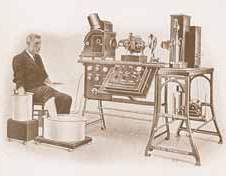
W H AT L I E S Ahead
He is the best physician who is the most ingenious inspirer of hope.
SAMUEL TAYLOR COLERIDGE, ENGLISH POET AND PHILOSOPHER, 1772-1834
In 1903, Dutch physiologist Willem Einthoven,
they’ve also learned that preventive measures,
MD, PhD invented the electrocardiograph, a
such as getting regular exercise, eating a healthy
machine that measures the minute electrical cur-
diet, and not using tobacco, can have a profound
rents generated by the heart. Initially, it was a
impact on the aging cardiovascular system.
cumbersome and costly device, taking five techni-
In the future, interventions to slow accelerated
cians to operate. During the procedure, patients
aging of the heart and arteries in apparently
had to place both hands and both feet in buckets
healthy young and middle-age people could pre-
of water. But as a result of this advance cardiologists vent or delay the onset of heart disease, stroke,
began, for the first time, to fully understand the
and other cardiovascular disorders in later life,
electrical processes involved in generating the heart Dr. Lakatta says.
beat. With this knowledge, they were able to more
These interventions
precisely diagnosis certain cardiovascular problems.
may take many
A little more than a century later, scientific inge-
forms. For instance,
nuity has led to the development of many other
the more we under-
advances. Scientists, for instance, have developed
stand about the
magnetic resonance imaging and other noninvasive
changes that take
ways to study the aging heart. Researchers have
place in cells and
discovered a host of innovative drug treatments to
molecules during
help the ailing heart and arteries work better. And
aging, the closer we
Willem Einthoven, MD, PhD,
cardiologists and surgeons have successfully pio-
get to the possibility
Dutch physiologist
neered the use of cardiac catheterization, cardio-
of designing drugs
vascular stents, implantable pacemakers, bypass
targeted to those changes. Gene therapies can also
surgery, and heart transplants.
target specific cellular changes and could poten-













